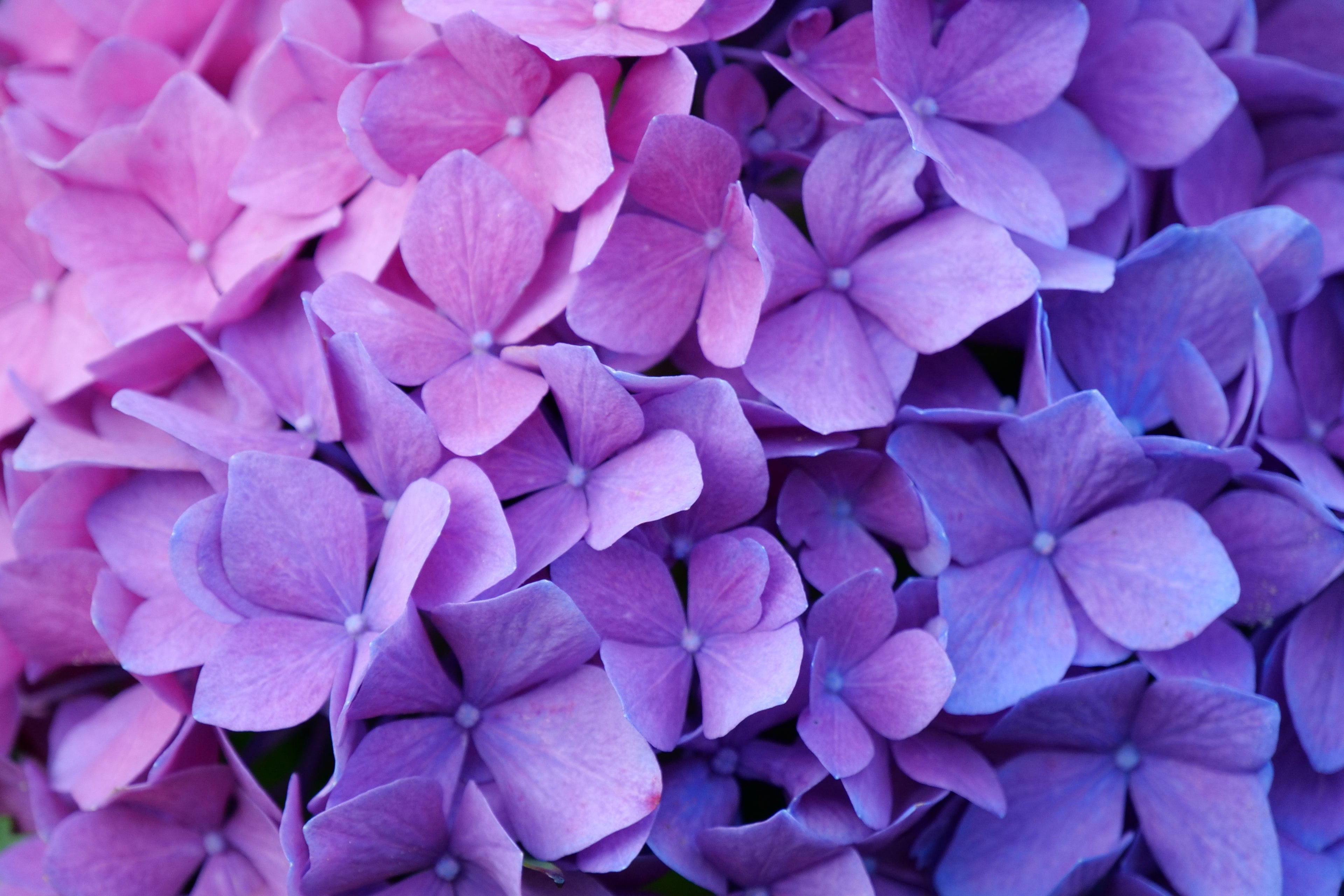Can vinegar change the color of hydrangeas?
Vinegar has a place in the home, but does it belong in the garden? Some gardeners have started using vinegar to lower their soil pH to change bigleaf hydrangea (Hydrangea macrophylla) bloom colors. Does this actually work? The short answer is kind of; in theory, it can. But is it your best long-term solution for altering your soil pH? We don't think so, and here is why!
A Quick Chemistry Lesson
Did you know that hydrangea colors don't directly depend on soil pH for their bloom color? It gets a little more complicated than that! Bloom pigments actually depend on the availability of aluminum ions (Al+) in the soil. In basic soils (pH above 7.5), aluminum ions combine with hydroxide ions (OH-) to form Al(OH)3, which is immobile in the soil and unavailable to plants. However, when the soil acidifies (pH lower than 6.5), these aluminum ions are no longer tied down hydroxide, and can freely mingle with other ions. It will react with other ions, including those plants absorb. This means that aluminum is now "mobile" and can be taken up by plants. As hydrangeas take up more aluminum ions, the blooms take on blue hues. Bigleaf hydrangeas can have blue flowers in acidic soils and pink flowers in basic soils.
While increasing the aluminum mobility in your soil will change your blooms' pigment, it can also be dangerous for your plants! A soil with a pH that is too low can be toxic. An excess of aluminum in the soil can even kill the plant. Make sure you are regularly testing your soil to ensure you are not lowering the pH too much.

What does this have to do with vinegar?
Vinegar is an acidic solution composed of 5% acetic acid and water. A pH of 7 is neutral, and household vinegar has a pH of around 2.4 (which is quite acidic). The theory is, applying diluted vinegar to the soil will lower the pH enough to change the color of your hydrangea blooms. This strategy will make the soil more acidic, but not for long!
Do we think this is a good solution? No, not really. The vinegar will quickly dilute in the soil, especially if it rains or is irrigated, not making much of a pH difference. Plus, for your hydrangeas to change colors, they need a pH change sustained over a long time. It could take even longer than one growing season! Every time you water, you would have to add vinegar to your soil to maintain the pH.
This solution also might not be best for your plant or local wildlife. You may have heard of vinegar being used as a weed killer. The acetic acid in vinegar can easily burn through the wax coating on leaves, destroying any leafy green tissue it's sprayed on. However, the roots aren't harmed by the vinegar when applied directly to the soil. The harsh smell of vinegar will welcome pests like fungus gnats while deterring wildlife from calling your garden home. It even can deter worms and other important soil organisms that are beneficial to your garden!

What are the alternatives?
Personally, we think hydrangea blooms are beautiful in every color and don't recommend altering the pH of your soil. Changing the pH can have some consequences in the garden, including making the soil unsuitable for nearby plants. However, if you're determined to change your bloom color, we'd recommend using garden sulfur or ammonium sulfate to lower the pH, or ground lime to raise the pH. This is easiest in a container, so consider planting your shrub in a large pot!





